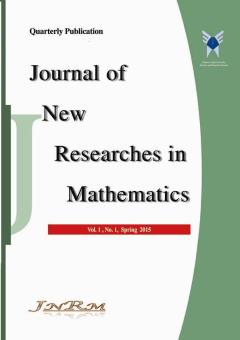Inverse optimization for linear fractional programming problem with bounded decision variables
Subject Areas : تحقیق در عملیات
1 -
Keywords: برنامه ریزی کسری خطی, شرایط مکمل زائد, متغیرهای کراندار, بهینه سازی معکوس,
Abstract :
Inverse optimization is a modern study in operation research topics that is taken into consideration of researchers in recent three decades. In fact, the purpose of inverse optimization is adjustment in the parameter values of a mathematical programming problem until a given feasible point of those problem arrives to optimality. If this is possible, then those parameter values be must found that require minimum adjustments. In this paper, a branch of the inverse optimization for linear fractional programming problem with bounded decision variables is investigated that have wide applications in industrial area in order to optimize production. To this end, the duality relations and complementary slackness conditions of linear programming problems are used. Next, the conditions for a feasible solution, in order to be optimized by adjusting parameter values of the objective function, are stated and discussed. Finally, a numerical example of the proposed method with complete analysis is presented.
[1] Burton, D., Toint, Ph. L., On an instance of the inverse shortest paths problem. Mathematical Programming, 53(1992), 45–61.
[2] Burton, D., Toint, Ph. L., On the use of an inverse shortest paths algorithm for recovering correlated costs. Mathematical Programming, 63(1994), 1–22.
[3] Zhang, J., Ma, Z., Yang, C., A column generation method for inverse shortest paths problems. ZOR Mathematical Methods of Operations Research, 41(1995), 347–358.
[4] Zhang, J., Liu, Z., Ma, Z., On the inverse problem of minimum spanning tree with partition constraints. ZOR Mathematical Methods of Operations Research, 44(1996), 171–188.
[5] Sokkalingam, P. T., Ahuja, R., Orlin, J.B., Solving inverse spanning tree problems through network flow techniques. Operations Research, 47(1999), 291–298.
[6] Zhang, J., Liu, Z., Calculating some inverse linear programming problems. Journal of Computational and Applied Mathematics, 72(1996), 261– 273.
[7] Zhang, J., Liu, Z., A further study on inverse linear programming problems. Journal of Computational and Applied Mathematics, 106(1999), 345–359.
[8] Yang, C., Zhang, J., Ma, Z., Inverse maximum flow and minimum cut problems. Optimization, 40(1997), 147–170.
[9] Zhang, J., Cai, nM.C., Inverse problem of minimum cuts. Mathematical Methods of Operations Research, 47(1998), 51–58.
[10] Ahuja, R.K., Orlin, J.B., Inverse optimization. Operations Research, 49(2001), 771–783.
[11] Ahuja, R.K., Orlin, J.B., Combinatorial algorithms for inverse network flow problems. Networks, 40(2002), 181–187.
[12] Amin, G., R., Emrouznejad, A., Inverse Linear Programming in DEA. International Journal of Operations Research, 4(2) (2007), 105-109.
[13] Sadri, S., Rostamy- Malkhalifeh, M., Shoja, N., Inverse Linear Programming in Cost Efficiency and Network. Advances and Applications in Statistics, 51(2017), 131-149.
[14] Sadri, S., Rostamy-Malkhalifeh, M., The Calculation of the output price vectorby applying reverse linear programming: The novel approach in DEA. Journal of New Researches in Mathematics, 4(16) (2019), 55-68.
[15] Zhang, J., Liu, Z. Solving a class of inverse Qp problems by a smoothing Newton methode. Journal of Computational Mathmathics, 27(6) (2009), 787-801.
[16] Zhang, J., Xu, C., Inverse optimization for linearly constrained convex separable programming problems. European Journal of Operational Research, 200(2010), 671–679.
[17] Hladik, M., Generalized linear fractional under interval uncertainty. European Journal of Operational Research, 205(1) (2010), 42-46.
[18] Jain, S., Arya, N., Inverse linear fractional programming: A new approach. Journal of Computer and Mathmathical Sciences, 3(5) (2012), 542-547.
[19] Jain, S., Arya, N., On Inverse Linear Fractional Programming Problem. European Journal of Mathematical Sciences, 2(3) (2013), 320-328.
[20] Charnes, A., Cooper, W., W., Programming with linear fractional functionals. Naval Reserch Logistics Quarterly, 9(1962), 181-186.
[21] Murty KG., Linear Programming. John Wiley & Sons, New York, 1983.
[22] Bazaraa, Mokhtar, S., John J., Jarvis, Hanis, D., Sherali, Linear programming and network flows. John Wiley & Sons, 1990.


